As a coffee enthusiast, I’m excited to share my knowledge on taking home brewing to the next level for you. In this comprehensive guide, I’ll cover everything you need to know to brew specialty coffee at home.
From selecting the best equipment to mastering the right techniques and discovering tips for making the perfect cup of coffee, you’ll gain the knowledge to elevate your own coffee game. Join me as we delve into the world of specialty coffee brewing!
Choosing the Right Coffee
To brew specialty coffee, you’ll need to start with high-quality whole bean coffee that are specifically roasted for specialty coffee. Here’s what you need to know:
- Look for beans that are labeled “specialty coffee” or “single-origin,” as these are often the best quality and will offer the most complex and nuanced flavors.
- Consider the roast level – for specialty coffee, a medium roast is usually best as it allows the natural flavors of the beans to shine through.
- Choose beans that match your flavor preferences – for example, if you like fruity, acidic coffees, look for beans from Ethiopia or Kenya, while if you prefer chocolatey, nutty flavors, try beans from Brazil or Colombia.
Grinding Your Freshly Roasted Beans
When brewing specialty coffee, grinding your coffee fresh is a crucial step. To ensure the best grind consistency, it’s recommended to use a burr grinder. The grind size should be adjusted according to your chosen coffee brewing method – for instance, fine grinds work best for espresso, while medium-coarse grinds are ideal for pour-over or drip brewing.
Measuring your ground coffee with a scale is essential, and the recommended coffee-to-water ratio is typically 1:16 or 1:17.
Water Quality and Temperature
As a coffee aficionado, I know that water quality and temperature are two critical factors that can make or break your coffee experience. Therefore, it’s essential to use the right quality and temperature of water to brew the perfect cup of coffee.
Firstly, it’s crucial to use fresh, clean water free of any impurities or odors, as these can affect the taste of your coffee.
Additionally, the temperature of the water is critical, with the recommended range being around 195-205°F (90-96°C) for most brewing methods.
Consider using a gooseneck kettle for more precise pouring and control over water flow.
This type of kettle allows you to pour the water in a controlled manner, allowing for more even saturation of the coffee grounds and a better extraction of flavor.
In addition, gooseneck kettles often have temperature control features, making it easier to achieve the ideal water temperature for your specific brewing method.
By paying attention to the quality and temperature of your water, and using the right equipment such as a gooseneck kettle, you can elevate your specialty coffee brewing to the next level and enjoy a delicious cup of coffee every time.
Basic Brewing Methods
There are several basic methods that are great for making coffee at home. Here’s what you need to know to make coffee great again:
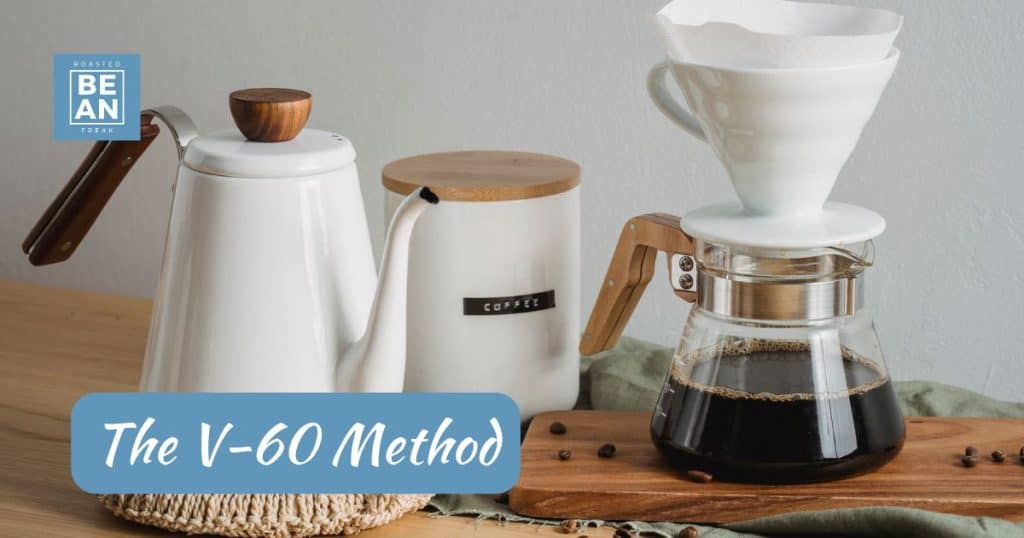
Related Article: Drip Coffee vs Pour Over: Master the Art of Coffee Brewing with Bee House
Pour-Over
Pour-over coffee brewing is a popular and effective method of brewing specialty coffee at home. Here are the essential steps to make the perfect pour-over coffee:
- Choose a pour-over device such as a Hario V60 or Kalita Wave that holds the filter and coffee grounds while allowing water to pass through at a steady rate. These are great and affordable options if you are in the market for a single serve coffee maker.
- Wet the paper filter before adding coffee to eliminate any paper flavor that may affect your coffee’s taste.
- Add your medium to fine ground coffee to the filter. If the coffee is too coarse it the hot water will pass through the grounds too fast.
- Pour hot water over the grounds in a slow, circular motion to ensure even extraction.
- Adjust the grind size, water temperature, and pour rate according to your desired taste. A finer grind will require a slower pour rate and a lower water temperature, while a coarser grind will need a faster pour rate and a higher water temperature.
By mastering the pour-over brewing method and experimenting with different variables, such as grind size, water temperature, and pour rate, you can unlock the full potential of your coffee and enjoy a delicious cup of good coffee that suits your taste preferences.
With a pour-over, you have complete control over the how the brewing process, ensuring that your coffee is extracted evenly and consistently.
So, make coffee your own way using the pour-over method and experience the difference in taste and quality. The resulting final cup is well worth the additional effort.
Check out this article on the Secrets of the James Hoffmann Method: How to Consistently Make Perfect French Press and V-60 Coffee
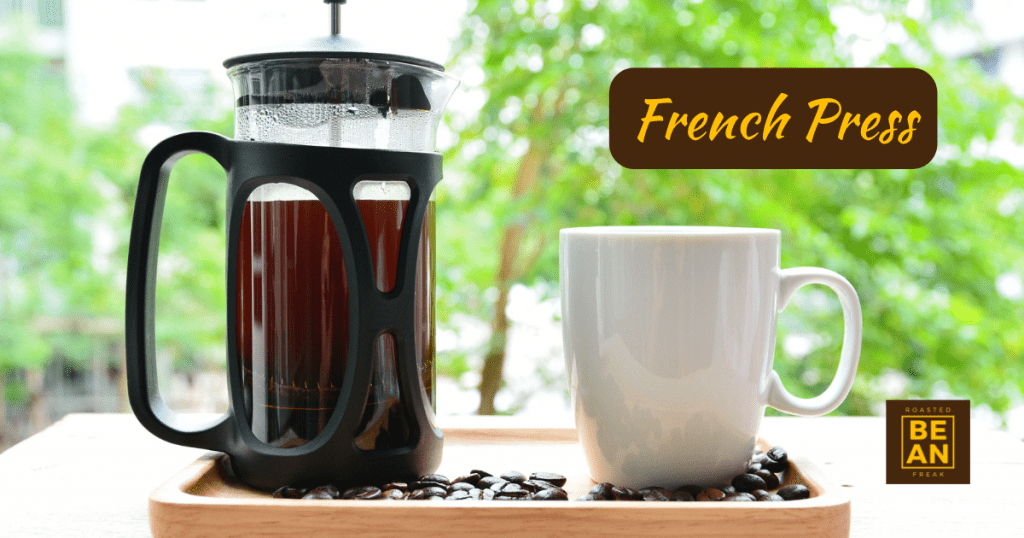
French Press
When it comes to brewing specialty coffee, a French Press can be a great option that produces a rich, full-bodied cup of coffee. Here’s how to make French press coffee:
- Start with high-quality coffee that is specifically roasted for specialty coffee.
- Grind the beans coarsely, as a fine grind can result in over-extraction and a bitter taste.
- Add the ground coffee to the French press.
- Heat water to around 195-205°F (90-96°C) and pour the hot water over the coffee, making sure all the grounds are saturated.
- Stir gently to ensure even extraction and let the coffee steep for 4-5 minutes.
- Press down the plunger slowly to separate the coffee grounds from the liquid.
- Pour the coffee into your cup or carafe and serve immediately. Avoid letting the coffee sit in the French press for too long, as it can continue to extract and become over-brewed.

AeroPress
As a coffee enthusiast, I enjoy using the AeroPress brewing method to make a flavorful, and great coffee with minimal effort. The AeroPress is a compact and portable device that uses air pressure to extract coffee flavor.
Here’s what you need to know to make a perfect cup of AeroPress coffee:
- First, add ground coffee to the AeroPress chamber. The recommended amount is around 17 grams or two heaping scoops of coffee.
- Next, pour hot water over the coffee in the chamber, filling it up to the desired level. The ideal water temperature for AeroPress coffee is around 175-185°F (80-85°C).
- Use the stirring tool to gently stir the coffee and water together for 10 seconds. This ensures that all the grounds are evenly saturated with water and helps to extract a balanced flavor.
- Place the plunger on top of the AeroPress chamber and press down slowly to extract the coffee. This process should take around 20-30 seconds.
- Adjust the grind size, water temperature, and brew time to suit your taste preferences. For a stronger coffee, use a finer grind and longer brew time, while a coarser grind and shorter brew time will result in a milder coffee.
By following these steps and experimenting with different variables, you can make a delicious cup of AeroPress coffee that is customized to your liking.
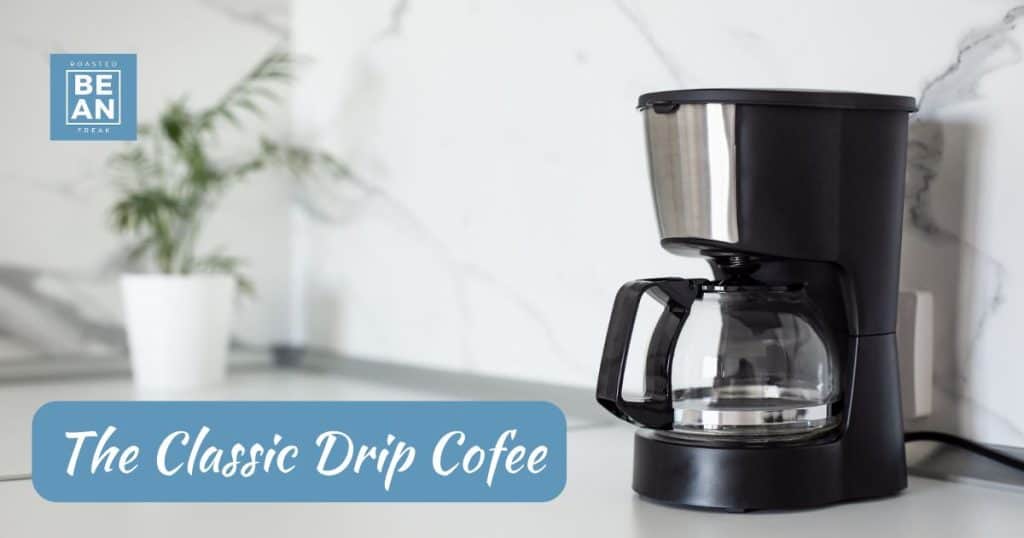
Brewing Coffee with Drip Coffee Makers
If you’re a fan of drip coffee, brewing specialty coffee using a drip coffee maker is an excellent way to enjoy a flavorful and well-balanced cup hot coffee at home.
Here’s what you need to know to make coffee yourself:
- Start by selecting high-quality, freshly roasted coffee beans that are specifically labeled as specialty coffee. These beans are typically roasted in small batches to bring out their unique flavors and aromas.
- Grind your coffee beans just before brewing to ensure maximum freshness and flavor. For drip coffee, a medium-fine grind is ideal, as it allows for optimal extraction without over-extracting or under-extracting the coffee.
- Fill the water reservoir of your drip coffee maker with fresh, clean water, and turn the machine on. It’s essential to use the right amount of water and coffee to achieve the desired strength and flavor. A good rule of thumb is to use one to two tablespoons of coffee per six ounces of water.
- Once the water has heated up and is ready for brewing, add your ground coffee to the filter basket. Distribute the coffee evenly across the filter to ensure even extraction.
- Start the brewing process and allow the coffee to drip into the carafe. Avoid letting the coffee sit on the hot plate for too long, as this can cause it to become bitter or burnt.
- Pour and enjoy your delicious cup of specialty coffee. You can experiment with different roast levels, brewing times, and water temperatures to achieve your desired taste. Don’t be afraid to try different brewing styles to discover the unique flavors and nuances of each specialty coffee.
- Try using two paper filters to slow the drip process just enough to get a fuller extraction and a strong coffee.
- Save the coffee grounds for your mulch or to sprinkle around your planter bed to keep pests away. Seriously, it works. The Power of Coffee Grounds: How to Protect Your Plants from Unwanted Pests
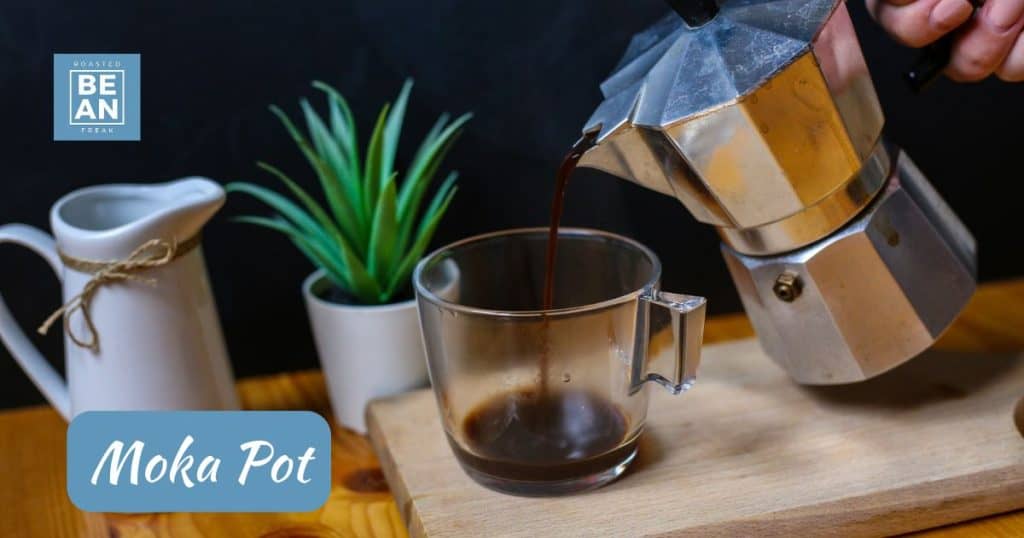
The Moka Pot
For coffee lovers and enthusiasts who are looking to brew specialty coffee at home, a Moka pot is a great option. This Italian-style coffee maker uses steam pressure to extract the coffee’s flavor and aroma, resulting in a rich and robust cup of joe.
Here’s what you need to know:
- Start by filling the bottom chamber of the Moka pot with cold water up to the safety valve.
- Insert the metal filter basket into the bottom chamber and fill it with finely ground coffee.
- Use a tamper to level and compress the coffee, but not too tightly as it can impede the flow of water.
- Screw the top and bottom chambers together tightly and place the Moka pot on the stove over medium heat.
- As the water in the bottom chamber heats up, the steam will build up and force the water up through the coffee grounds and into the top chamber.
- Once the coffee starts to appear in the top chamber, remove the Moka pot from the heat and run the bottom chamber under cold water to stop the brewing process.
- Serve immediately and enjoy your rich and flavorful Moka pot coffee.
By mastering the Moka pot brewing method and experimenting with different variables such as grind size, coffee to water ratio, and brew time, you can customize your coffee to your liking and enjoy a delicious cup of specialty coffee at home.
Realted Article: Brew Better Coffee with Brikka: The Revolutionary Stovetop Espresso Maker
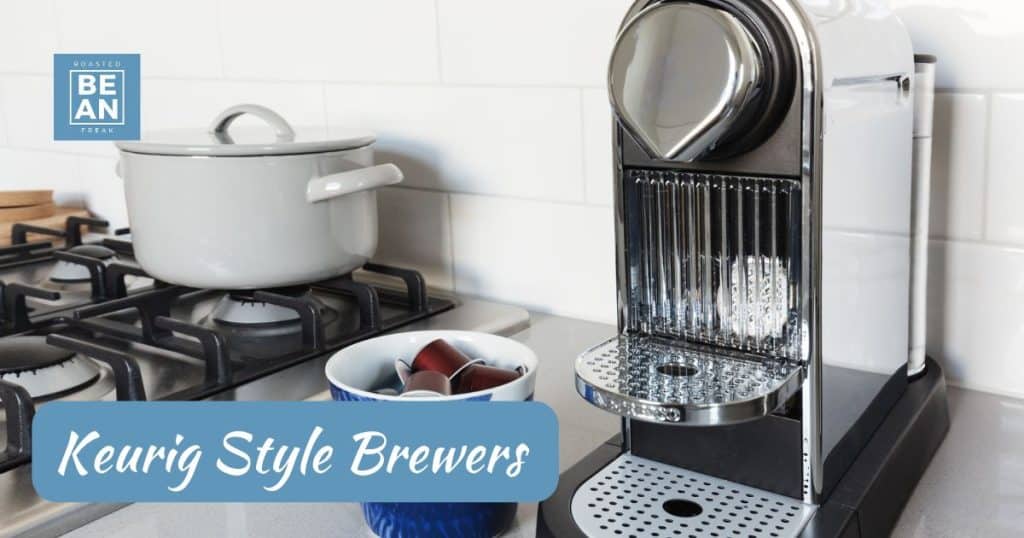
Brewing Coffee with a Keurig
For those who prefer convenience and speed, a k-pod coffee machine is an excellent choice for brewing both cold brew and specialty coffee at home or at the office.
Here’s what you need to know:
Cold Brew:
- Fill a large cup with ice and add water until it is three-quarters full.
- Insert a k-pod into the machine and start the brewing cycle.
- Once the brewing cycle is complete, pour the coffee over the ice and water mixture.
- Stir and enjoy your delicious coffee.
Specialty Coffee:
- Insert your desired k-pod into the machine and select the appropriate size and strength settings.
- Add any additional ingredients, such as milk or sugar, if desired.
- Start the brewing cycle and wait for the machine to finish.
- Once the brewing is complete, remove the k-pod and enjoy your specialty coffee.
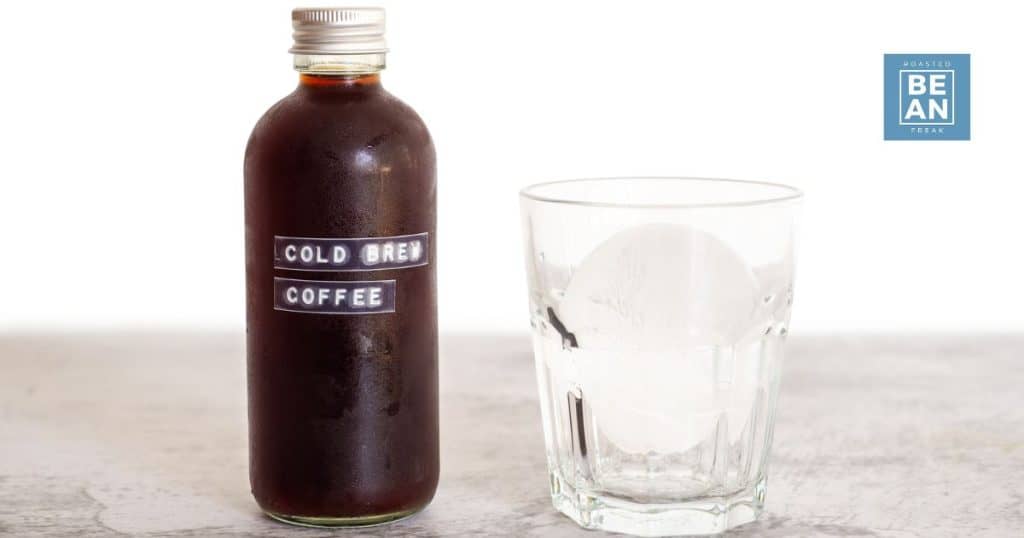
Cold Brew Coffee
For those who prefer a cold and refreshing coffee, cold brew is an excellent option that is easy to make at home.
Here’s what you need to know to make coffee now:
- Choose your coffee: To make cold brew coffee, you’ll need to start with high-quality, freshly roasted coffee beans. Look for beans that are specifically labeled for cold brew or have tasting notes that pair well with cold brew. Some popular options include African and South American coffee beans.
- Grind your coffee: Once you have your beans, you’ll need to grind them. For cold brew, you’ll want a coarse grind to help the coffee steep properly. A burr grinder is recommended for the most consistent results.
- Combine coffee and water: Add your ground coffee to a large jar or pitcher, and pour in cold, filtered water. Aim for a ratio of one part coffee to four parts water, but feel free to adjust based on your taste preferences.
- Steep: Once the coffee and water are combined, stir gently to ensure that all the grounds are wet. Cover the jar or pitcher and let the mixture steep in the fridge for at least 12 hours, or up to 24 hours for a stronger brew.
- Strain: After the coffee has steeped, you’ll need to strain it. Use a fine mesh strainer or cheesecloth to remove the grounds from the liquid.
- Serve: Once the coffee is strained, it’s ready to drink! You can enjoy cold brew coffee over ice, with milk or cream, or simply on its own.
Advanced Brewing Methods
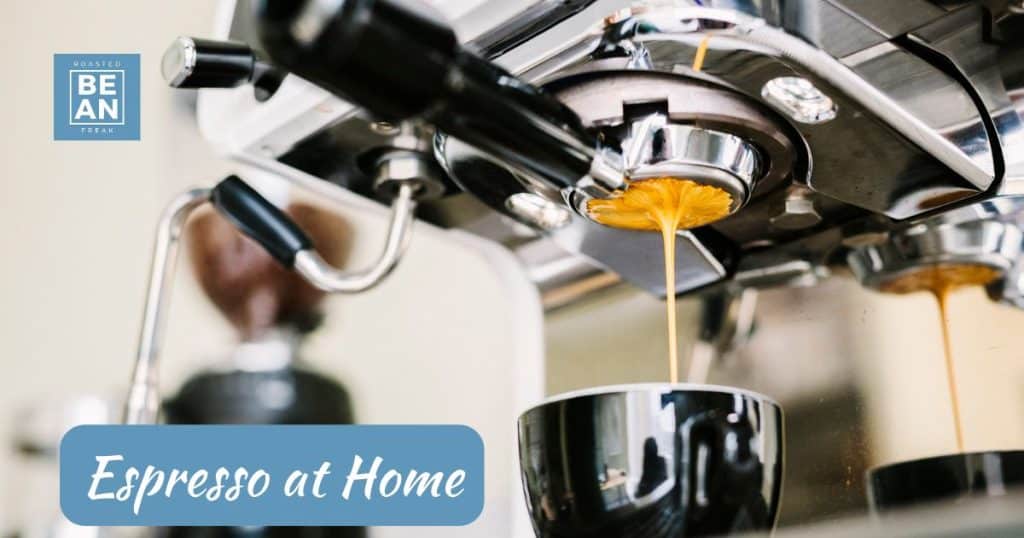
Espresso Machine
For the coffee aficionado, a high-quality espresso maker can be a game-changer when it comes to brewing specialty coffee at home.
Here’s what you need to know to make the perfect espresso:
- Choose high-quality, fresh whole coffee bean and grind them to a fine consistency. The right grind is essential to ensuring a balanced and flavorful shot of espresso.
- Fill the espresso machine’s portafilter with the ground coffee and tamp it down firmly. A consistent tamp is crucial for even extraction.
- Preheat the machine and run a shot of water through the portafilter to eliminate any leftover grounds or debris.
- Pull the shot by activating the machine’s pump and monitoring the shot time. A shot should ideally take 20-30 seconds to brew, resulting in a thick, creamy layer of crema on top of the espresso.
- Adjust the grind, dose, and tamp pressure to achieve your desired taste. A finer grind and heavier dose will result in a stronger shot, while a coarser grind and lighter dose will produce a milder flavor.
- Steam milk to the desired temperature and texture for your drink, using the machine’s steam wand. Proper milk steaming technique is crucial to creating silky, velvety microfoam.
- Pour the espresso shot and steamed milk together to create your desired drink, such as a latte or cappuccino.
By mastering the art of espresso brewing and experimenting with different variables, you can create specialty coffee drinks that rival those of your favorite local coffee shop.
Don’t forget to take a look at this article I wrote on the different types of espresso drinks. Comparing Piccolo & Cortado: The Ins and Outs of Espresso & The Latte: Hot or Cold
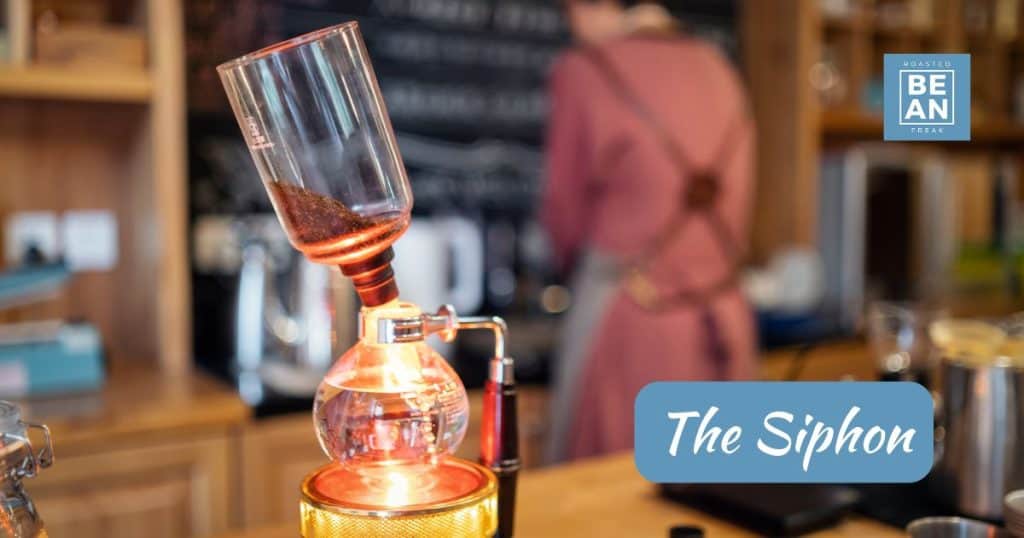
Siphon
For those who are passionate about exploring new and exciting coffee styles, the siphon method is an excellent choice.
This unique brewing method involves finely ground coffee beans and using a siphon, or vacuum coffee maker, to create a cup of amazing coffee that’s rich in flavor and aroma.
Here’s what you need to know to get started with making coffee at home with a siphon:
- First, heat water in the bottom chamber of the siphon.
- While the water heats up, add coffee grounds to the top chamber and stir to ensure an even extraction.
- As the water continues to heat up, it will eventually rise into the top chamber and mix with the coffee grounds.
- Once the water has fully risen into the top chamber, stir the coffee for a few seconds to ensure even extraction.
- Then, remove the siphon from the heat source and allow it to cool down. As the siphon cools, a vacuum effect will occur, which will draw the coffee back down into the bottom chamber, leaving the spent grounds behind.
- Finally, serve the coffee immediately, preferably in a preheated cup.
By using the siphon brewing method, you can create coffee that’s full-bodied, complex, and bursting with flavor.
Experiment with different coffee bean producing regions, water temperatures, and brew times to find the perfect combination that suits your taste preferences.
How, and Where, to shop for Specialty Coffee
For those who are looking to explore the world of specialty coffee at home, finding the right beans is just as important as knowing how to brew them. Here’s what you need to know about shopping for specialty coffee:
- Look for a reputable coffee roaster: Start by looking for a reputable coffee roaster who sources high-quality beans from different parts of the world. Check online reviews and ask for recommendations from fellow coffee enthusiasts.
- Check the roast date: Make sure to check the roast date on the bag of coffee. Specialty coffee is best consumed within two to four weeks of roasting. Coffee that has been sitting on the shelf for too long may have lost its freshness and flavor.
- Know the origin and processing method: Specialty coffee is often sourced from specific regions and processed in unique ways that can affect its flavor profile. Look for information on the origin and processing method of the coffee you are considering.
- Consider the flavor profile: Specialty coffee often features unique flavor profiles that can range from fruity and floral to nutty and chocolatey. Consider the flavor profile that you enjoy and look for coffees that match those characteristics.
- Shop at specialty coffee shops: If you have access to specialty coffee shops in your area, consider shopping there. These shops often have a wide selection of high-quality beans and knowledgeable staff who can provide recommendations based on your taste preferences.
Choosing the right Coffee Grinder
As a coffee lover, I’ve learned that the type of grinder you use can make all the difference when it comes to the quality of your coffee. Blade grinders are a popular choice because they’re affordable and easy to use, but they tend to produce uneven grinds which can lead to over-extraction or under-extraction.
Burr grinders, on the other hand, are more precise and produce a consistent grind, resulting in a better cup of coffee.
I prefer using a burr grinder because I enjoy experimenting with different grind sizes to find the perfect balance for my brewing method.
For example, fine grounds are ideal for espresso machines while coarse grounds work better for French press or pour-over coffee.
One thing to keep in mind is that the quality of your grinder can affect the taste of your coffee. Using a blade grinder can lead to heat buildup and can alter the flavor of the beans, whereas a burr grinder produces a more consistent grind and doesn’t generate as much heat.
Overall, I highly recommend investing in a decent burr grinder and buying whole beans to brew the best quality cup of coffee possible.
It’s worth the investment in the long run, and you’ll notice the difference in the taste of your coffee.

So What is the right brewing method for me?
By taking the time to shop for high-quality specialty coffee and experimenting with different brewing methods, you can elevate your coffee drinking experience and discover a world of complex and nuanced flavors.
For coffee lovers, the choice of a coffee maker is a crucial decision that determines the quality and taste of the brew. The coffee world has a plethora of brewing equipment, from the classic French press to the sophisticated espresso machine.
Each coffee maker has its unique features, brewing capacity, expense, and availability, which make it ideal for different coffee tastes and enthusiasts. In this article, we will compare different coffee makers and explore why someone should choose a particular coffee maker over another.
First, the French press is a popular choice for brewing coffee.
It is affordable, readily available, and can brew strong coffee even in large quantities. With a French press, you can brew coffee with a strong, bold flavor, making it an ideal choice for coffee enthusiasts who prefer a robust cup of coffee.
However, the French press may not be the best option for those who want a smooth and clean cup of coffee.
Second, the pour-over coffee maker is a great option for those who desire a quality cup of coffee.
It is relatively affordable, easy to use, and readily available. The pour-over brew method also allows for a slow and controlled extraction, resulting in a well-balanced and clean cup of coffee.
However, it can only brew a limited amount of coffee, making it unsuitable for large gatherings.
Third, the espresso machine is the go-to choice for those who really love coffee and espresso-based drinks.
It is a more sophisticated coffee maker and can brew coffee at high pressure, resulting in a concentrated shot of espresso.
But… espresso machines are expensive, and their maintenance cost is also high. This makes it ideal for serious coffee enthusiasts who are willing to invest in their brewing equipment.
Lastly, single-serve coffee makers such as K-pod machines are great for convenience and ease of use.
They are readily available and can brew a decent cup of coffee in a matter of seconds.
However, they may not offer the same quality of coffee as other brewing methods, and the cost per cup of coffee can be relatively high.
In conclusion, the choice of a coffee maker depends on personal preferences, brewing capacity, expense, and availability. Whether you are a serious coffee enthusiast or just starting in the coffee world, there is a coffee maker that suits your needs.
By understanding the unique features of each coffee maker, you can make an informed decision and brew the cup of coffee you deserve.
Have a deep burning desire to know more about coffee? Check out of FAQ page!
